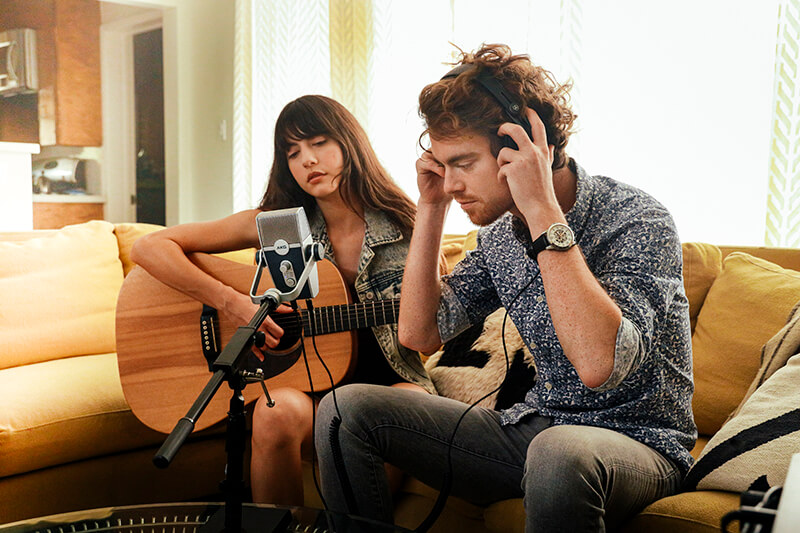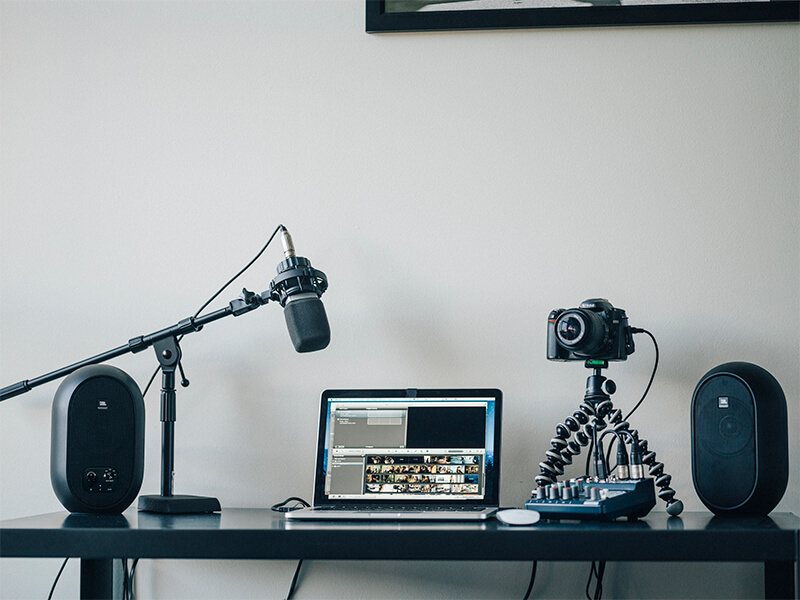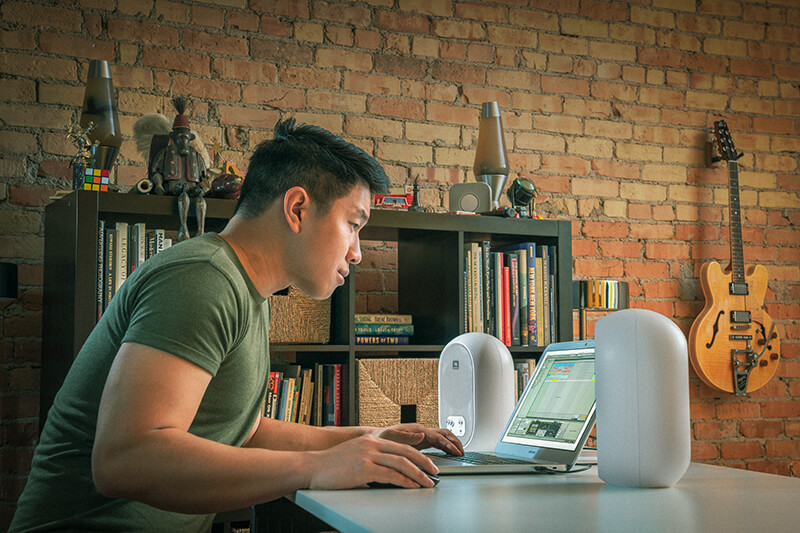If you’re like most musicians, gigs are your lifeblood. But when you can’t connect with your audience in person, livestreaming is your best opportunity to gain new fans and generate income while building momentum for your next show.
Livestreaming lets you provide a casual, intimate experience that offers a deeper connection to your fans. It’s also a great way to share new content, such as acoustic sets, Q&A sessions and glimpses behind-the-scenes. The world’s biggest stars have embraced livestreaming, whether it’s Keith Urban performing from his basement on Instagram or Andrea Bocelli live-streaming a solo Easter concert from Milan’s empty Duomo cathedral to 5 million people around the globe.
The great news is, livestreaming can be done by anyone, just about anywhere there’s a web connection. In fact, you’re likely holding everything you need to get started in your hand right now. By investing in a few free and low-cost tools and following these simple tips, you’ll be on your way to producing a professional-quality event that will thrill your fans and keep them coming back for more.
CHOOSE YOUR PLATFORM
Streaming services range from free, familiar social media platforms such as Facebook Live, Twitch, Instagram Live, YouTube Live and Google Hangouts to turnkey services that will host your event for you for a cut of earnings.
Get to know the unique features of each service: YouTube, Facebook and Instagram all offer instant “go live” functionality; Twitch, known for videogame streaming, has numerous built-in promotional features including rewards for followers. Wowza offers VR and 360-degree streaming functionality. You don’t have to stick to one platform; you could use platforms like Facebook and Instagram to reach your established audience, for example, while using Twitch to build a new one.
THINK BEYOND THE BAR GIG
Streaming events are opportunities to “expand your brand” and explore new content ideas: Bring your fans behind the scenes into your production process; hold Q&A sessions, podcast-style interview shows, masterclasses or live DJ sets. Consider “crowdsourcing” a festival or variety show by pairing up with artists, comedians and other performers.
Tip: Be mindful of playing cover songs; some services, including Facebook and YouTube, have agreements in place with rights holders, but performing copyrighted works without permission can get you flagged—and even banned—by others.

BE YOUR OWN PR AGENT
Create a streaming landing page or social media event post and share it. This is a chance to cast a wide net—think global, not local. In your communications, include the platform you’ll be using, music you’ll be playing, topics you’ll be discussing, etc. Engage your audience by asking attendees to submit song requests and questions ahead of time. Consider asking a few people to host virtual “watch parties.” (Build lead capture into all of your communications so you can keep your new fans informed.)
BANISH BAD ACOUSTICS
Choose a “stage” with good acoustics, one that isn’t boomy or echo-y. Empty rooms and rooms with hard surfaces in them generate lots of reverb—which might feel fun to perform in, but will make your streamed show sound like mud. Make a test recording in your space; if you hear echoes, break up the reflective surfaces in your room by adding curtains, wall hangings, an area rug, even a large plant.
CONSIDER A PRODUCTION ASSISTANT
Your livestreaming setup can be as simple as a phone and an internet connection, or it can be a complex operation combining multiple cameras and microphones, professional lights, and simulcasting to many platforms. You can certainly stream a solo performance yourself without assistance, but you can pull off more complex scenarios if you have an extra hand. Enlisting a friend to mix sound, switch between cameras and field audience questions lets you focus on nailing the perfect performance. Remember, there’s a significant delay between your live performance and the streamed signal, so have your assistant monitor your show feed with over-ear headphones like AKG 371-BTs, which will provide some isolation from the sound in the room and offer wireless freedom of movement over Bluetooth. JBL 104-BT Compact Studio Monitors also offer Bluetooth functionality, which allows a partner to easily monitor your performance from other rooms.

CHANNEL YOUR INNER SET DESIGNER
Creating visual interest is key to getting fans’ attention and keeping them engaged. Make sure your space is well lit and free of obstructions and distractions. Set up bright, even lighting, especially on your face (a ring light provides uniform, shadow-free illumination) and run tests to make sure that dramatic lighting translates on camera. If using a video switcher, place a second camera overhead, on the floor, on an instrument, or even enlist a friend to manage a roving camera.
SAY BYE TO BUILT-IN MICS
Yes, you can capture audio with your laptop or phone microphone, but if you’re a musician, chances are you’re aiming for better sound quality. Just about any standalone microphone will out-perform the mics built into your devices. While multi-microphone setups are great, you can capture professional sound with a single mic. The simplest way to livestream a performance is to choose a versatile USB microphone such as AKG Lyra that allows you to capture ultra-HD audio directly with your phone, tablet or laptop. Lyra also allows you to adapt its focus to capture a single performer, duets, or ensembles, plus it looks great on camera.
If you’re already using your computer for home recording, chances are you’re already set up to channel content into encoding software (Open Broadcaster Software is a popular open-source platform) that will feed your streaming platform. You can capture audio with the professional microphones you already own and then send audio from your workstation output, from an interface or from a mixer with a USB connection to your computer. Soundcraft Notepad series small-format consoles combine pro-grade analog components with a USB audio interface and include Lexicon effects that’ll help you sound your best.
OPTIMIZE INTERNET PERFORMANCE
The higher your stream quality, the more data you will be using, and the more bandwidth you will need. Make sure your internet connection is as robust as possible by using a hard-wired connection, running a speed test, choosing an off-peak time window and improving stability by shutting down bandwidth-hogging applications and ask other users to not to be streaming on your network at the same time as your performance (that means no Fortnight or YouTube kids!)

PERFORM LIKE A PRO
Always do a runthrough before you go live: Check everything, from your internet speed to your camera settings to your mic stand. Create a loose script or set list that will provide structure, and consider putting up a title slide or video preroll to give viewers time to tune in, and to give you a small buffer. Then, it’s showtime! Perform directly into the camera lens, and make your audience feel like part of the action by responding to comments and giving shout-outs. There’s a fine line between being engaging and rambling; stay focused and keep things tight.
ASK FOR TIPS, BUT ASK NICELY
While platforms such as SoundStage and StageIt offer built-in ticketing, if you’re just getting started, consider making payment voluntary. Many streaming services have tipping features; you can also point fans to popular platforms like Venmo, PayPal and Buy Me a Coffee. Don’t forget to link to your website and merch pages, and remind people about these options during your show.
TREAT EVERY END AS A NEW BEGINNING
Take advantage of the momentum you just started with your event: Immediately afterward, take time to respond to fan comments and review feedback. Share your recorded stream with your fans; include a call to action to subscribe, check out merch or preview new tracks. Then comes the awkward part: Sit down and watch your performance with a critical eye, noting what worked and what didn’t. Review audience analytics, such as how long viewers tuned in and when they dropped off, and use everything you’ve learned to hone a plan for putting on an even more amazing show next time.
ADDITIONAL RESOURCES
Check your Internet speed with a Google speed test.
Learn how to livestream on Facebook, Instagram, YouTube, Twitch and Wowza.
Download the Open Source Broadcast free encoder.
Explore SoundStage and StageIt ticketing-integrated streaming services.
Sign up for Venmo, PayPal and Buy Me a Coffee payment platforms.
Get to know the AKG Lyra, AKG 371-BT headphones, JBL 104-BT monitors and Soundcraft Notepad small-format mixers.
